Themed collection Honorary themed collection for Thomas P. Russell

Introduction to the honorary themed collection for Thomas P. Russell
Guest Editors Ilja Gunkel, Xiaodan Gu, Jodie Lutkenhaus, Du Yeol Ryu, Jiun-Tai Chen, and Zhiqun Lin introduce the honorary themed collection on the occasion of Prof. Thomas P. Russell's 70th birthday.

J. Mater. Chem. A, 2023,11, 11028-11030
https://doi.org/10.1039/D3TA90077K
Recent progress in block copolymer soft-template-assisted synthesis of versatile mesoporous materials for energy storage systems
Various mesoporous materials synthesized from block copolymer soft-template-assisted methods and their application in energy storage systems.

J. Mater. Chem. A, 2023,11, 7358-7386
https://doi.org/10.1039/D2TA09353G
Recent development and emerging applications of robust biomimetic superhydrophobic wood
Schematic illustration for the development and emerging applications of biomimetic superhydrophobic wood, including a variety of preparation strategies, durability tests, and representative emerging applications.

J. Mater. Chem. A, 2023,11, 6772-6795
https://doi.org/10.1039/D2TA09828H
Various approaches to synthesize water-stable halide PeNCs
This review briefly introduces the degradation mechanisms according to the RH and summarizes various approaches to stabilize halide perovskites. An outlook for research directions of halide perovskites is also suggested.

J. Mater. Chem. A, 2023,11, 6796-6813
https://doi.org/10.1039/D2TA09286G
The development of neutron reflectometry as a probe of the nanoscale structure of polymer thin film systems – founded on the pioneering work of Professor Thomas P. Russell
The pioneering work of Thomas Russell and colleagues helped establish neutron reflectometry as a valuable and often indispensable probe of the nanoscale structure of polymer thin film systems.

Nanoscale, 2023,15, 4725-4737
https://doi.org/10.1039/D2NR06756K
Recent progress in emulsion gels: from fundamentals to applications
This article presents a systematic review of emulsion gels: from fundamentals to applications.
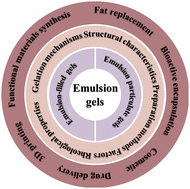
Soft Matter, 2023,19, 1282-1292
https://doi.org/10.1039/D2SM01481E
Rheological responses of microgel suspensions with temperature-responsive capillary networks
Tunable rheological responses are obtained by coupling temperature-responsive capillary networks with jammed microgels, which facilitate complex structures and scale-ups by 3D printing.

Soft Matter, 2023,19, 4432-4438
https://doi.org/10.1039/D3SM00540B
Structured liquids stabilized by polyethyleneimine surfactants
We present a novel polyethyleneimine surfactant (PEIS) with redox responsiveness. With PEIS, emulsions and all-liquid devices can be constructed, showing promising applications in encapsulation, cargo release, and chemical separations.

Soft Matter, 2023,19, 609-614
https://doi.org/10.1039/D2SM01559E
Impact of peripheral alkyl chain length on mesocrystal assemblies of G2 dendrons
Our results show the impact of alkyl chain lengths (Cn) on mesocrystal formation related to the contour length ratio of periphery Lp to wedge Lw. Energy landscapes for Cn dendrons at Lp/Lw ≈ 1 are more intricate than those with longer or shorter Cn.

Nanoscale, 2023,15, 9069-9075
https://doi.org/10.1039/D3NR01243C
Effect of surface tension on elastocapillary wrinkling of interfacially adsorbed hydrogel disks with photothermally programmed swelling profiles
In this work, we study the influence of surface tension on light-induced wrinkling of hydrogel disks containing patterned regions of photothermally-active gold nanoparticles at the air–water interface.
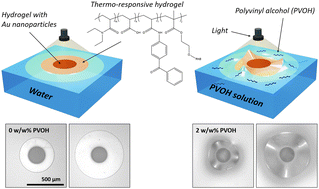
Soft Matter, 2023,19, 3543-3550
https://doi.org/10.1039/D3SM00001J
High-χ diblock copolymers containing poly(vinylpyridine-N-oxide) segments
The facile oxidation of PS-b-P4VP and PS-b-P2VP leads to PS-b-P4VPNO and PS-b-P2VPNO copolymers with high block incompatibility (high-χ BCPs). Well-ordered, thermally-stable sub-10 nm nanostructures are obtained.

J. Mater. Chem. A, 2023,11, 9846-9858
https://doi.org/10.1039/D3TA01386C
Cellulose nanofiber-reinforced solid polymer electrolytes with high ionic conductivity for lithium batteries
The composite solid polymer electrolyte (SPE), a soft copolymer reinforced with cellulose nanofibers, provides both high ionic conductivity and stiffness to suppress dendrite growth, thereby enabling high-energy-density lithium metal batteries.

J. Mater. Chem. A, 2023,11, 9521-9529
https://doi.org/10.1039/D3TA00380A
Enabling quantitative analysis of complex polymer blends by infrared nanospectroscopy and isotopic deuteration
Atomic-force microscopy coupled with infrared spectroscopy (AFM-IR) deciphers surface morphology of thin-film polymer blends and composites by simultaneously mapping physical topography and chemical composition.

Nanoscale, 2023,15, 7365-7373
https://doi.org/10.1039/D3NR00886J
Extraction of interaction parameters from specular neutron reflectivity in thin films of diblock copolymers: an “inverse problem”
Artificial neural networks are used to extract three Flory-Huggins chi parameters from neutron scattering length density profiles, which paves a way towards automated analysis of neutron reflectivity data.

Nanoscale, 2023,15, 7280-7291
https://doi.org/10.1039/D2NR07173H
Water-coupled monovalent and divalent ion transport in polyviologen networks
Electrochemical quartz crystal microbalance with dissipation monitoring (EQCM-D) revealed the ion-electron transport mechanism of viologen electrodes is dependent on anion valency, specifically the divalent sulfate ion exhibited mixed ion movement.

J. Mater. Chem. A, 2023,11, 8783-8790
https://doi.org/10.1039/D3TA00289F
Modifying flexible polymer films towards superhydrophobicity and superoleophobicity by utilizing water-based nanohybrid coatings
Waterborne nanocomposite coatings consisting of a low surface energy matrix in conjunction with appropriate nanoparticles were developed to be deposited onto flexible polyethylene films to modify them into superhydrophobic and even superoleophobic.

Nanoscale, 2023,15, 6984-6998
https://doi.org/10.1039/D2NR06780C
Terthiophene based low-cost fully non-fused electron acceptors for high-efficiency as-cast organic solar cells
Two fully non-fused electron acceptors based on terthiophene have been synthesized and a PCE of 11.2% is achieved.
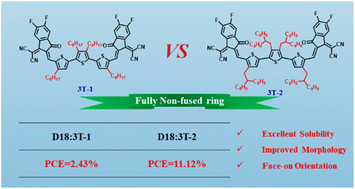
J. Mater. Chem. A, 2023,11, 7498-7504
https://doi.org/10.1039/D3TA00372H
Influence of solute association on the phase behavior of 12-hydroxystearic acid/n-alkane solutions
The association of the solute in the liquid phase stabilizes the solid phase a low concentration.

Soft Matter, 2023,19, 2339-2349
https://doi.org/10.1039/D3SM00013C
Aggregation state tuning via controlling molecular weights of D–A1–A2 type polymer donors for efficient organic photovoltaics
A polymer donor with a D–A1–A2 type structure was developed, whose aggregation state was tuned by molecular weight control, finally leading to over 15% power conversion efficiency.
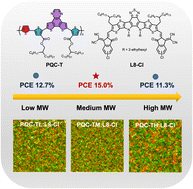
J. Mater. Chem. A, 2023,11, 6997-7005
https://doi.org/10.1039/D2TA09936E
High photogeneration and low recombination rate leading to high-performance non-fullerene organic solar cells
TPV/TPC, EQE/IQE measurements and simulation modeling reveal that the high-performance organic solar cells originate from both an increasing charge generation and a reducing recombination rate coefficient, with PCE potentially exceeding 21%.
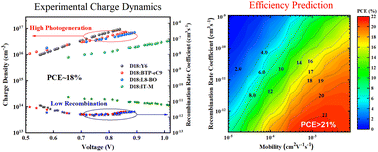
J. Mater. Chem. A, 2023,11, 6237-6247
https://doi.org/10.1039/D2TA08780D
Metal oxide cluster-assisted assembly of anisotropic cellulose nanocrystal aerogels for balanced mechanical and thermal insulation properties
Aerogels of cellulose nanocrystals with balanced thermal and mechanical performance can be fabricated via a 1 nm metal oxide cluster assisted unidirectional freeze-drying processing.

Nanoscale, 2023,15, 5469-5475
https://doi.org/10.1039/D2NR06551G
An efficient polymer acceptor with fluorinated linkers enables all polymer solar cells with an efficiency of 15.7%
A polymer acceptor PY-DF was developed by incorporating difluorothiophenes as linking units. The resulting all-PSCs obtained the best PCE (15.7%) with both enhanced VOC (0.97 V) and JSC (23.1 mA cm−2) simultaneously.

J. Mater. Chem. A, 2023,11, 5584-5592
https://doi.org/10.1039/D2TA09364B
The self-assembly of a pair of low-symmetry tetracarboxylic acid molecules and their co-assembly with bridging molecules at the liquid–solid interface
In this work, the self-assembly behavior of a pair of low-symmetry carboxylic acid molecules (H4OBDB and H4ADDI) and their co-assembly behavior with trimesic acid (TMA) as a bridging molecule were studied using a scanning tunneling microscope (STM).

Nanoscale, 2023,15, 4353-4360
https://doi.org/10.1039/D2NR06740D
Asymmetric nonfullerene acceptors with isomeric trifluorobenzene-substitution for high-performance organic solar cells
By alternating the substituted position in the terminal end group, two asymmetric non-fullerene acceptor isomers are designed, showing a better device performance for the γ-substituted fashion.
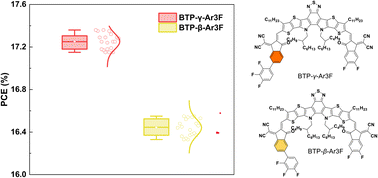
J. Mater. Chem. A, 2023,11, 4539-4546
https://doi.org/10.1039/D2TA09858J
Tunable Janus geometric morphology from aqueous two-phase systems on a superhydrophobic substrate
Precise manipulation of the morphologies of aqueous Janus droplets by leveraging the PEG/DEX ATPS on a superhydrophobic surface.

J. Mater. Chem. A, 2023,11, 4155-4161
https://doi.org/10.1039/D2TA09202F
1,4-Azaborine based unfused non-fullerene acceptors for organic solar cells
Two novel unfused acceptors, ABBT-BO(DT), featuring 1,4-azaborine have been synthesized. ABBT-BO based OSCs achieved an optimal PCE of over 10% for higher exciton dissociation, improved carrier transport and suppressed charge recombination.
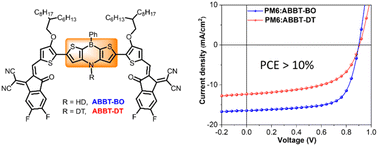
J. Mater. Chem. A, 2023,11, 3653-3662
https://doi.org/10.1039/D2TA09188G
Nanostructured doping of WSe2via block copolymer patterns and its self-powered photodetector application
We introduced nanostructured doping of WSe2via a single-step BCP nanolithography process, demonstrating a 3D WSe2 homojunction photodetector with improved optoelectronic performance and self-powered photodetection capability.
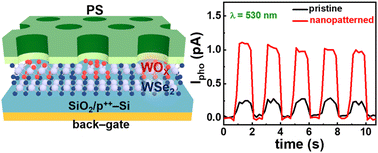
Nanoscale, 2023,15, 2595-2601
https://doi.org/10.1039/D2NR06742K
Simple and robust phenoxazine phosphonic acid molecules as self-assembled hole selective contacts for high-performance inverted perovskite solar cells
A new self-assembled hole selective material 2BrPXZPA-based inverted perovskite solar cell achieved a PCE of 22.93%, and further enhanced the PCE up to 23.66% by modify NiOx with 2BrPXZPA.

Nanoscale, 2023,15, 1676-1686
https://doi.org/10.1039/D2NR05677A
Assembly of polyelectrolyte star block copolymers at the oil–water interface
An integrated experimental and coarse-grained molecular dynamics simulation study of charged star-block copolymer assembly processes at the oil–water interface exploring the effects of block copolymer architecture and charge fraction.

Nanoscale, 2023,15, 1042-1052
https://doi.org/10.1039/D2NR05113C
Side chain isomerization enables high efficiency and thickness tolerant organic solar cells
An acceptor FEH2C8-2Cl is designed by introducing the isomerized side chains and the corresponding photovoltaic module with the active layer area 25 cm2 yields an efficiency of 11.71%.

J. Mater. Chem. A, 2023,11, 700-707
https://doi.org/10.1039/D2TA08301A
Stable, highly conductive and orthogonal silver nanowire networks via zwitterionic treatment
A high-performance AgNW electrode was developed via zwitterionic treatment, where the anions electrostatically adsorb on AgNWs and the cations enhance the electrostatic repulsion, resulting in orthogonally aligned AgNW electrode.

J. Mater. Chem. A, 2023,11, 158-166
https://doi.org/10.1039/D2TA07406K
Depletion attractions drive bacterial capture on both non-fouling and adhesive surfaces, enhancing cell orientation
Depletion attractions drive bacterial adhesion on non-adhesive surfaces, enhance cell capture on adhesive surfaces, immobilize bacterial cells flat to a surface, and help align cells gentle flow.

Soft Matter, 2022,18, 9205-9215
https://doi.org/10.1039/D2SM01248K
Apex hydrogen bonds in dendron assemblies modulate close-packed mesocrystal structures
Dendron assemblies consisting of G2-CONH2 and G2-CH2NH2 show the core-interaction-dependent mesocrystal structures of A15–σ–DDQC–C14. The more size-dispersed particles, the more susceptibility to chain exchange with increasing temperature.

Nanoscale, 2022,14, 16936-16943
https://doi.org/10.1039/D2NR05458B
Enhancing exciton diffusion by reducing energy disorder in organic solar cells
The addition of a highly crystalline polymer AC174 reduces energetic disorder and increases exciton diffusion length in the PM6:Y6 blend. Ternary devices achieve a champion power conversion efficiency of 17.2%, higher than that of PM6:Y6 (15.9%).
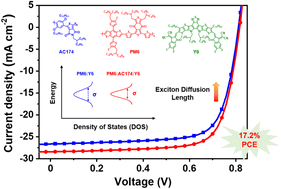
J. Mater. Chem. A, 2022,10, 24073-24083
https://doi.org/10.1039/D2TA07113D
Constructing anisotropic conical graphene aerogels with concentric annular structures for highly thermally conductive phase change composites towards efficient solar–thermal–electric energy conversion
Conical graphene aerogels with concentric annular structures are designed for thermally conductive phase change composites towards efficient solar–thermal–electric energy conversion.

J. Mater. Chem. A, 2022,10, 22488-22499
https://doi.org/10.1039/D2TA06457J
About this collection
During his long, extremely productive career, Professor Thomas P. Russell has made outstanding contributions to the field of polymer science and engineering, self-assembly, and solar energy conversion. His innovative research advances the fundamental understanding of the science and technology of block copolymers and organic solar cells. Moreover, he pioneered the utilities of small-angle scattering and reflectivity techniques to elucidate the phase separation of polymer blends and block copolymers as well as the morphology of interfaces.
On the occasion of Professor Russell’s 70th Birthday, the Guest Editors, Zhiqun Lin (Georgia Institute of Technology), Xiaodan Gu (University of Southern Mississippi), Ilja Gunkel (Adolphe Merkle Institute), Du Yeol Ryu (Yonsei University), Jiun-Tai Chen (National Yang Ming Chiao Tung University), and Jodie Lutkenhaus (Texas A&M University), have invited Professor Russell’s former students, co-workers, and friends to join in celebrating his achievements and continued contributions to the field through this themed collection. The articles in this themed collection are published in Journal of Materials Chemistry A, Nanoscale, and Soft Matter. The topics include but are not limited to self-assembly, physical and mechanical properties, and characterization of block copolymers; self-assembly of soft matter, nanohybrids and liquids; functional polymers for sensing and energy conversion and storage; and synthesis, crystallization, surfaces, and interfaces of polymers.